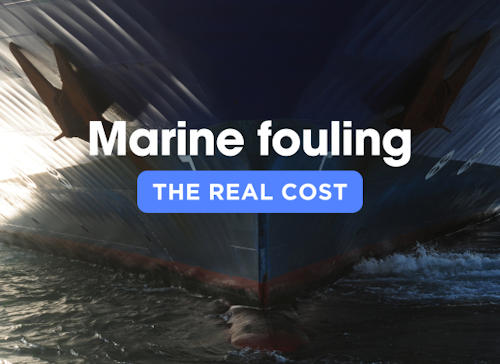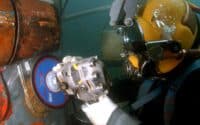The Hidden & Ugly Cost of Marine Fouling

Marine fouling is a well-known challenge among ship owners, but its full economic impact is often underestimated. The accumulation of marine organisms on a ship’s hull does more than just slow a vessel down; it significantly increases fuel consumption, accelerates corrosion, and leads to more frequent maintenance. These effects collectively and significantly drive up operational costs, impacting the bottom line in ways that can’t be ignored. Understanding and addressing the hidden costs of marine fouling is essential for maintaining a vessel’s efficiency and profitability in today’s competitive maritime industry.
| ShipUniverse: Hidden Costs of Marine Fouling | ||||
|---|---|---|---|---|
| Impact | Description | Performance Degradation | Associated Costs | Long-Term Consequences |
| Increased Drag | Marine fouling increases surface roughness, causing higher resistance against water movement. | 5-15% reduction in speed or up to 40% increase in fuel consumption. | Annual fuel cost increase of $200,000 to $1 million depending on ship size and route. | Reduced operational efficiency, higher carbon footprint. |
| Maintenance Costs | Frequent cleaning and recoating of the hull to remove fouling and reapply anti-fouling coatings. | Increased dry-dock frequency, leading to higher operational downtime. | Maintenance costs can exceed $100,000 per dry-dock visit. | Reduced time in operation, increased overall maintenance budget. |
| Corrosion Acceleration | Fouling organisms can create micro-environments that promote corrosion on the ship’s hull. | Reduced lifespan of hull materials. | Additional repair costs ranging from $50,000 to $500,000 over a vessel’s lifetime. | Long-term structural damage, increased frequency of repairs. |
| Environmental Regulations | Non-compliance with biofouling management regulations can lead to fines and restricted port access. | Potential delays and rerouting to compliant ports. | Fines up to $200,000 per incident; additional costs for compliance retrofitting. | Potential legal actions, loss of reputation. |
| Propeller Efficiency Loss | Fouling on the propeller reduces its efficiency, leading to higher fuel consumption. | 5-10% loss in propulsion efficiency. | Additional fuel costs of up to $100,000 annually. | Increased wear and tear on the propulsion system. |
| Insurance Premium Increases | Higher risk of accidents and damage due to fouling can lead to increased insurance premiums. | Higher operational risks due to reduced maneuverability and speed. | Insurance premiums could increase by 10-20%. | Higher long-term operating costs. |
Let’s take a hypothetical worst case scenario of a medium-sized commercial vessel (80,000 DWT) that has been heavily affected by marine fouling. This vessel operates on a global trade route, making multiple long-haul trips each year.
1. Increased Fuel Consumption
- Normal Fuel Consumption: 45 tons per day
- Fuel Price: $600 per ton
- Fouling-Induced Increase: 20% due to severe fouling
- Additional Fuel Required: 9 tons per day
- Additional Annual Fuel Cost:
- Operating Days: 250 days/year
- Extra Fuel Cost: 9 tons/day * 250 days * $600/ton = $1,350,000/year
2. Increased Maintenance Costs
- Dry-Docking Frequency: Normally every 2.5 years, but increased to every 2 years due to fouling
- Cost of Dry-Docking: $500,000 per visit
- Additional Maintenance Cost Over 5 Years:
- Additional Dry-Dock Visit: $500,000
- Cost Over 5 Years: $500,000
3. Corrosion and Hull Repair Costs
- Corrosion Acceleration: Severe fouling can lead to increased corrosion, necessitating hull repairs.
- Estimated Repair Costs: $200,000 every 5 years
- Additional Repair Costs Due to Fouling: Increased to $400,000 over 5 years
- Additional Cost: $200,000
4. Regulatory Compliance and Fines
- Non-Compliance Penalties: Potential fines for non-compliance with biofouling regulations.
- Example Fine: $100,000 per incident
- Number of Incidents Over 5 Years: 2 incidents
- Total Fines: $200,000
Total Additional Costs Due to Marine Fouling
- Increased Fuel Costs: $1,350,000/year
- Increased Maintenance Costs: $500,000 every 5 years
- Additional Hull Repair Costs: $200,000 every 5 years
- Regulatory Fines: $200,000 every 5 years
Total Over 5 Years: $8,750,000
This breakdown demonstrates how severe marine fouling can lead to significant, often unexpected costs, ultimately affecting a ship’s profitability. Proper management and prevention strategies are crucial to mitigate these expenses.

Do you have a Maritime Product or Service that may be of interest to Shipowners? Tell us about it here!
Do you have feedback or insights? Please reach out to editor @ shipuniverse.com



